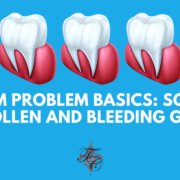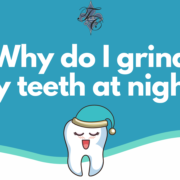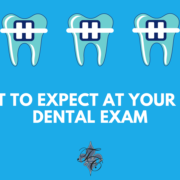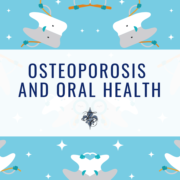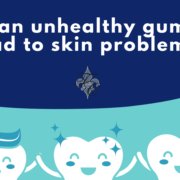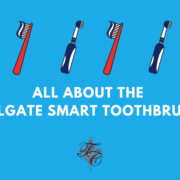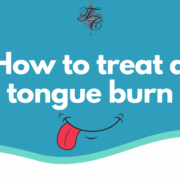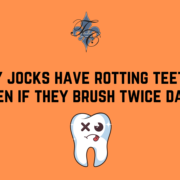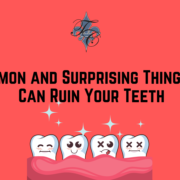GUM PROBLEM BASICS: SORE, SWOLLEN AND BLEEDING GUMS
Do your gums bleed frequently? Does it hurt your gums when you brush your teeth? You’re not alone. Millions of people have the same problems. Sore, swollen and bleeding gums are not all that uncommon and could be caused by a number of things. It could be something as small and easy to fix as brushing your teeth and gums too hard, or something more serious, like gingivitis.
What causes your gums to bleed?
Causes of gum bleeding and/or pain include:
- Gingivitis: A gum disease that causes your gums to swell. It’s a milder form of gum disease that happens when plaque builds up on your gum line. If left untreated, however, it can turn into periodontitis – a much more serious gum disease that will harm your gum tissue and bones that help keep your teeth in your mouth.
- Medications: Certain medications will cause your gums to bleed.
- Pregnancy: As odd as it sounds, bleeding gums is very common in women who are pregnant. It’s also known as pregnancy gingivitis.
- You’re new to flossing and your gums are adjusting.
- Your dentures are misfitted.
- Diabetes: Bleeding or swollen gums is often a sign of Diabetes, either Type 1 or Type 2.
- Not enough Vitamin C: Did you know that Vitamin C helps your tissue repair itself and also makes your bones and teeth stronger? Make sure you’re getting enough!
What can you do to soothe sore and bleeding gums?
If you have sore, bleeding gums and it’s painful to brush your teeth, you should make an appointment with your dentist the first chance you get. Chances are, it’s something minor, but you can never be too careful when it comes to your health! Here are some other ways to reduce swelling and bleeding in your gums:
- Increase your Vitamin C and Vitamin K intakes: Foods that are high in Vitamin C include broccoli, spinach and other leafy greens, as well as oranges, bell peppers and tomatoes. The same leafy greens that are high in Vitamin C are also high in Vitamin K!
- Try a cold compress: Cold packs are known to reduce swelling, so try putting a cold compress for swelling.
- Rinse with warm salt-water.
- Call your dentist! We cannot stress enough how important it is to have regularly scheduled cleanings and check-ups. Your dentist and hygienist can remove plaque from areas of your mouth where you cannot, thus reducing your chances of developing gum disease.
If you have questions about bleeding gums or you need to schedule an appointment, contact Dr. Tim Chauvin’s office today.

